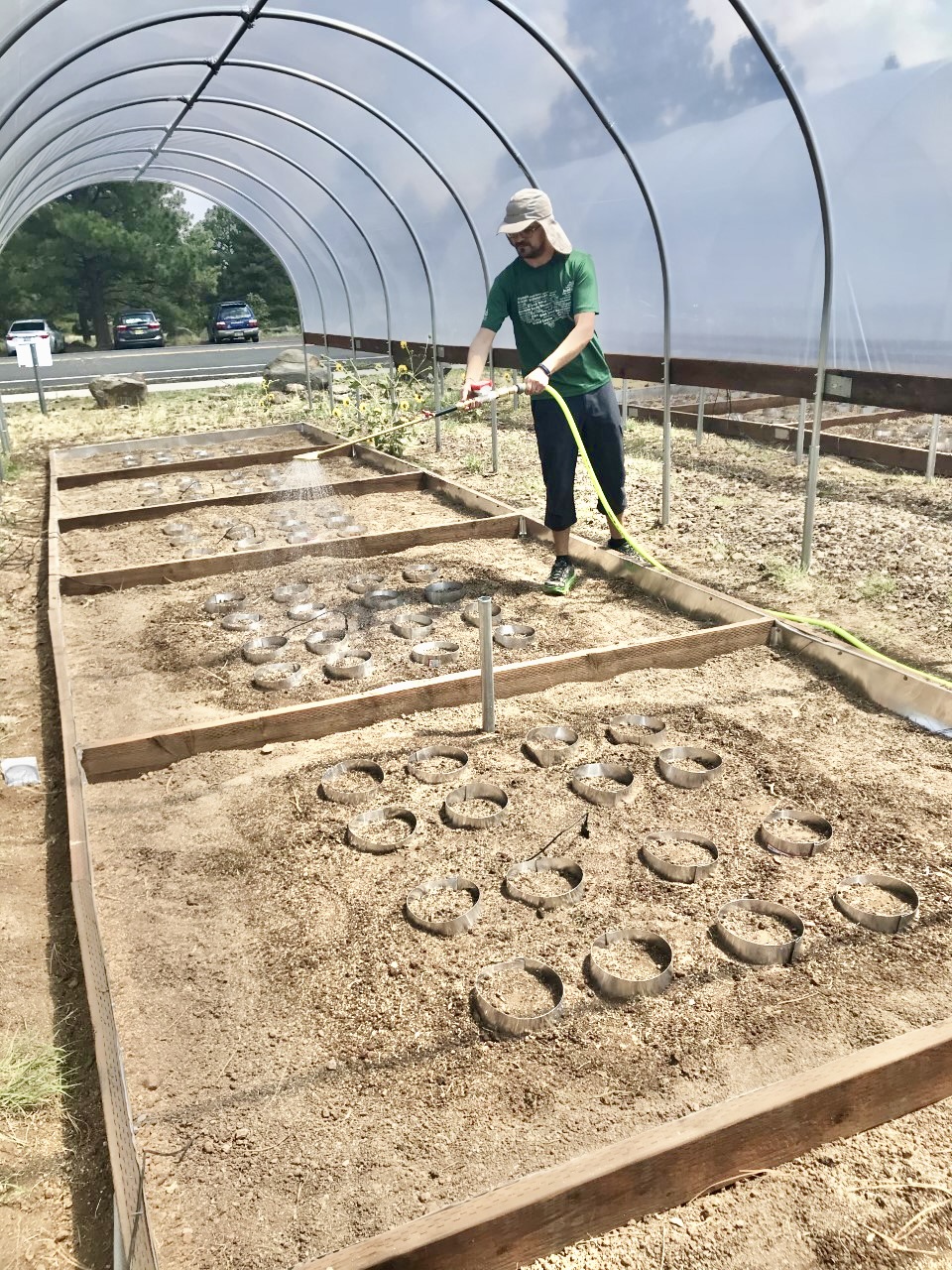Some information may be outdated.
When large swaths of land are disturbed, such as through a wildfire burn, they can quickly get out of control: invasive plants take over or erosion further wipes the land away. For land managers like the Forest Service and Bureau of Land Management, the question becomes: how can we restore this land, and more importantly, how can we restore this land with native seeds?
Daniel Winkler, a research ecologist at the U.S. Geological Survey’s Biological Science Center, is attempting to answer that question.
Winkler runs the GRID project—Germination for Restoration Information and Decision-Making—which works with the Colorado Plateau Native Plant Program to identify native seeds for current and future restoration projects. The project, which started in 2018, has two sites: one in Flagstaff, Arizona, and one at the Canyonlands Research Center along State Route 211 in the Indian Creek Area.
The trouble with large-scale restoration projects is that the land needs thousands of plants. The amount of time, money, and resources required to grow seedlings and then transfer them into the wild is nearly impossible for the BLM or the Forest Service to accomplish on larger scales, Winkler said, so the next best method is to drop thousands of seeds onto the landscape from helicopters.
“That’s with the hope that at least a handful of the seeds will germinate, and restore the system,” Winkler said. “But there’s a lot of evidence showing that’s ineffective. We really need to go back, to look at the seeds we’re putting in the ground and determine if they come from the right place—that they have the right genetics, that they produce the right plant traits that we’re looking for.”
The GRID project aims to provide that baseline information, Winkler said. The project is done in drought gardens, where Winkler and his team attempt to mimic natural amounts of precipitation, while also using those numbers to find out just how much precipitation certain seeds need to germinate. This will allow the team to discover the germination requirements of certain seeds: which conditions they should be planted in, and when.
“It’s very challenging to start these types of experiments from seeds because in most cases, especially with perennial plants on the Colorado Plateau, we don’t know if they’re going to be dormant or if they’ll be ready to grow once they’re in the ground,” Winkler said. “It’s a little bit of a shot in the dark with what seeds you put in the ground.”
When the project started in 2018, the team experimented with seeds from a species of globemallow. They subjected the seeds to three different drought treatments: severe, average, and above average. But that summer was hot and dry, and despite the team watering the plants bi-weekly, almost none of the seeds germinated. All the water immediately evaporated, Winkler said.
The next year, the team tried planting seeds at a different time of year, and experimented with diversifying the mix: the globemallow seeds were planted with another wildflower. That worked a bit better, which led the team to pursue more seed mixes. This year, the plots include ricegrass (achnatherum hymenoides), blue grama (bouteloua gracilis), squirreltail (elymus elymoides), Rocky Mountain bee plant (cleome serrulata), hoary tansyaster (machaeranthera canescens), curlycup gumweed (grindelia squarrosa), and firecracker penstemon (penstemon eatonii).
The team is also experimenting with taking the roof off of the drought garden, to allow for spring rains to potentially help germinate the seeds. In Flagstaff, the team is experimenting more with seedlings, looking for valuable information on how to keep native plants alive after they’ve germinated.
“With seedlings, we look at those really early stages of development and establishment, and we look for any particular plant traits or characteristics that can explain why some seed sources are more successful than others,” Winkler said. He expects the seed diversity experiment to continue at least through this year. After that, the team will use their findings and adjust the experiment again.
“It’s fun for me because this is the best type of way to do science that’s meaningful,” Winkler said.
He can come up with an experimental design to answer a number of questions about climate change, invasive species, and native seed collection, he said, and use that information to further answer the ultimate one: under what circumstances will native seeds be the most successful?
Appreciate the coverage? Help keep local news alive.
Chip in to support the Moab Sun News.





